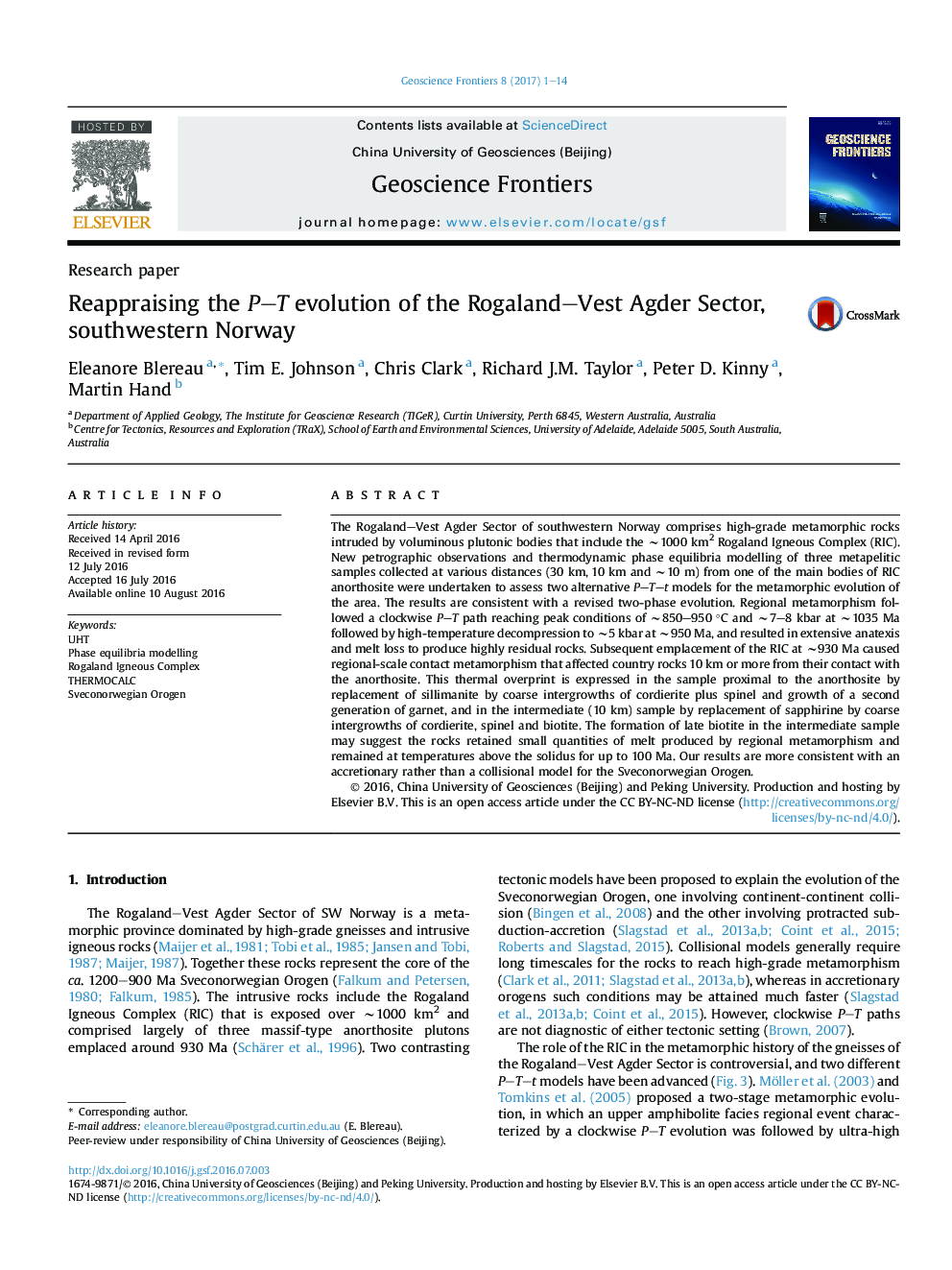| Article ID | Journal | Published Year | Pages | File Type |
|---|---|---|---|---|
| 5780284 | Geoscience Frontiers | 2017 | 14 Pages |
â¢The Rogaland-Vest Agder Sector followed a polymetamorphic evolution.â¢Regional metamorphism reached â¼850-950°C at 7-8 kbar followed by contact metamorphism (â¼950°C at 3-6 kbar).â¢Contact metamorphism affected rocks up to 10 km from the Rogaland Igneous Complex.â¢Limited cooling is likely to have occurred between the regional and contact metamorphic event.â¢A long-lived eastward subducting accretionary margin associated with tectonic switching is the suggested geodynamic setting.
The Rogaland-Vest Agder Sector of southwestern Norway comprises high-grade metamorphic rocks intruded by voluminous plutonic bodies that include the â¼1000 km2 Rogaland Igneous Complex (RIC). New petrographic observations and thermodynamic phase equilibria modelling of three metapelitic samples collected at various distances (30 km, 10 km and â¼10 m) from one of the main bodies of RIC anorthosite were undertaken to assess two alternative P-T-t models for the metamorphic evolution of the area. The results are consistent with a revised two-phase evolution. Regional metamorphism followed a clockwise P-T path reaching peak conditions of â¼850-950 °C and â¼7-8 kbar at â¼1035 Ma followed by high-temperature decompression to â¼5 kbar at â¼950 Ma, and resulted in extensive anatexis and melt loss to produce highly residual rocks. Subsequent emplacement of the RIC at â¼930 Ma caused regional-scale contact metamorphism that affected country rocks 10 km or more from their contact with the anorthosite. This thermal overprint is expressed in the sample proximal to the anorthosite by replacement of sillimanite by coarse intergrowths of cordierite plus spinel and growth of a second generation of garnet, and in the intermediate (10 km) sample by replacement of sapphirine by coarse intergrowths of cordierite, spinel and biotite. The formation of late biotite in the intermediate sample may suggest the rocks retained small quantities of melt produced by regional metamorphism and remained at temperatures above the solidus for up to 100 Ma. Our results are more consistent with an accretionary rather than a collisional model for the Sveconorwegian Orogen.
Graphical abstractDownload high-res image (616KB)Download full-size image
